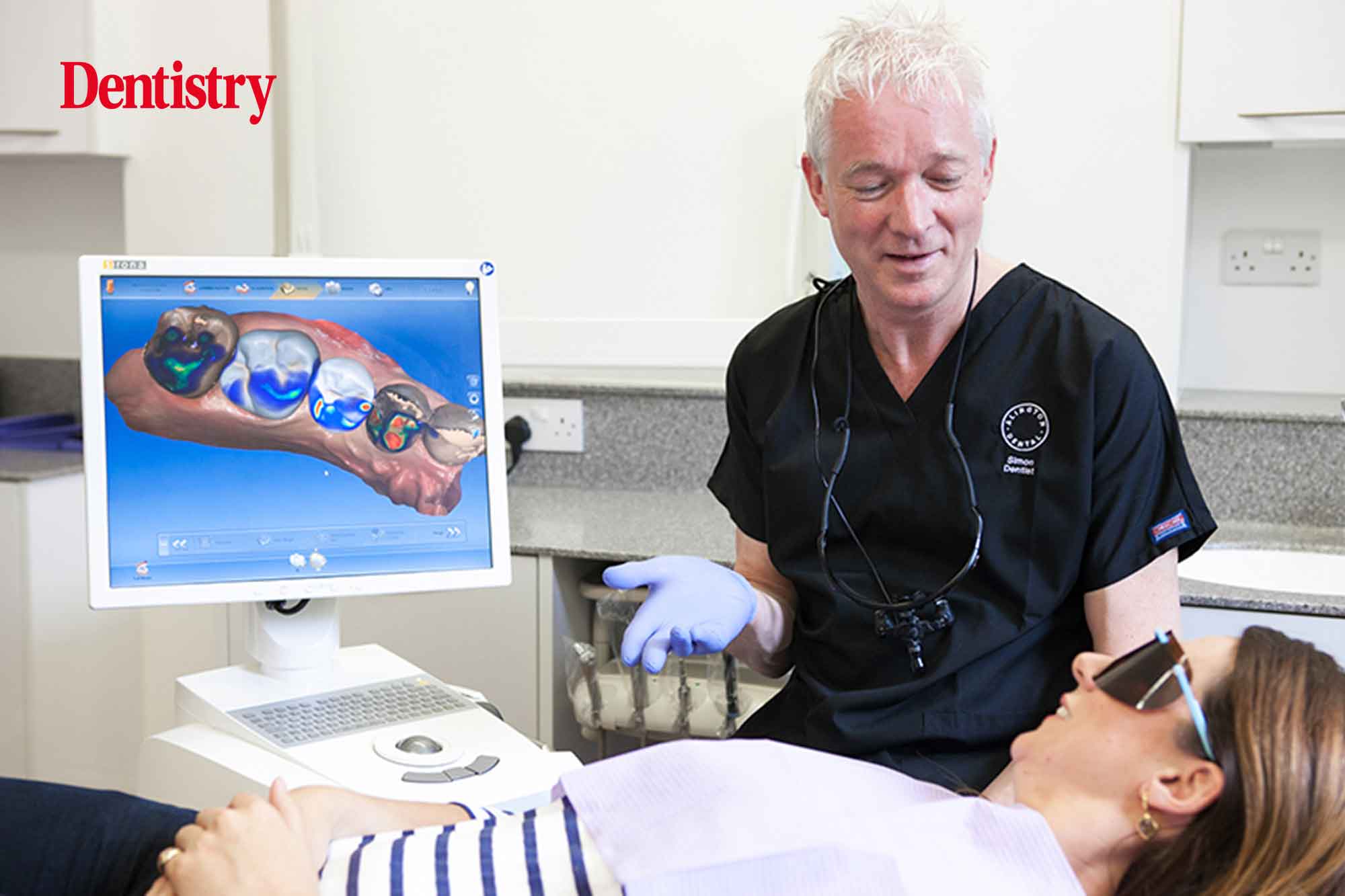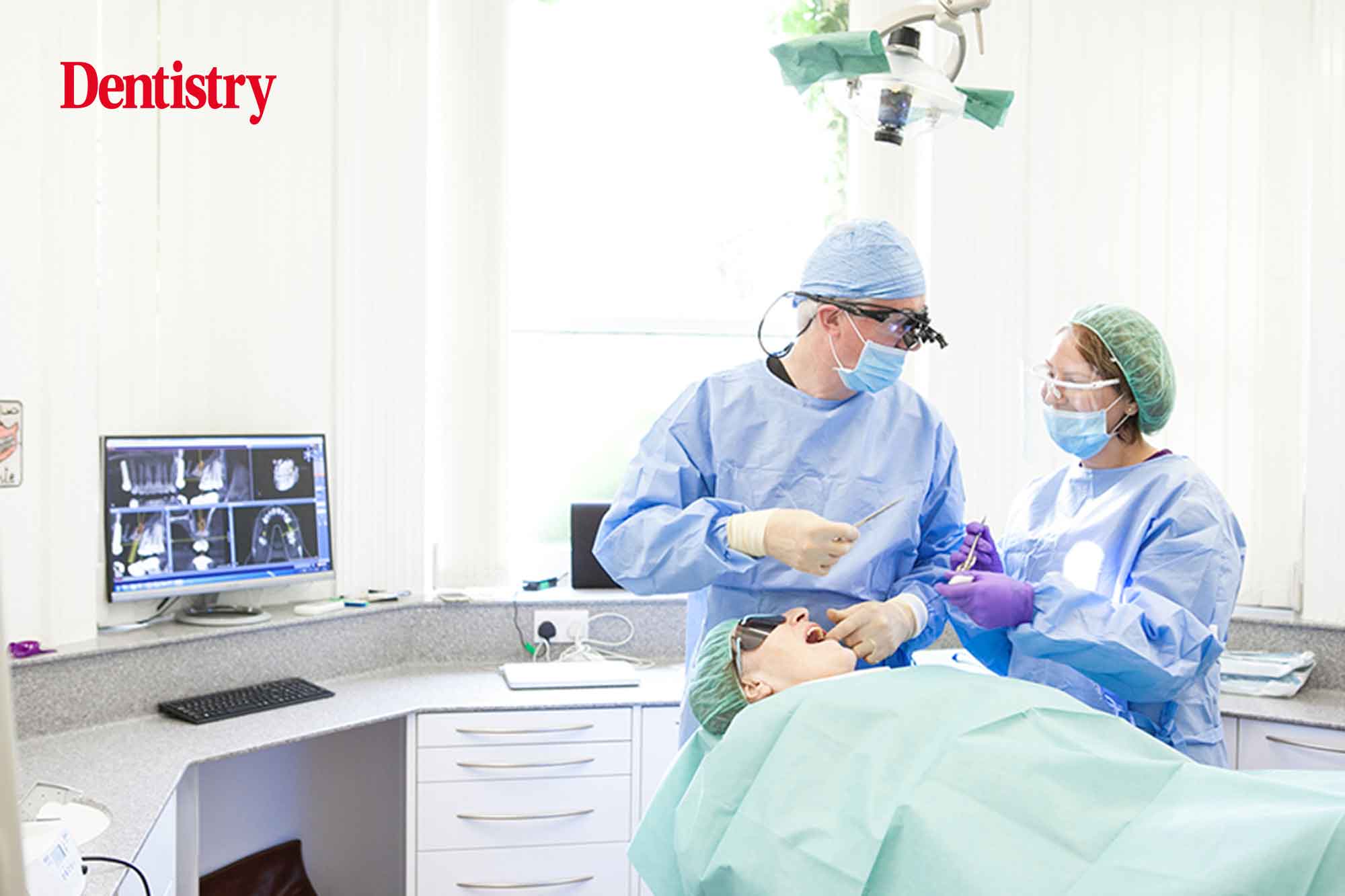 Simon Belford discusses his relationship with UKdentech and why he would recommend other dentists use the digital dental laboratory.
Simon Belford discusses his relationship with UKdentech and why he would recommend other dentists use the digital dental laboratory.
Can you please introduce yourself?
My name is Simon Belford and I am the clinical director of Alington Dental in Bournemouth.
I qualified from Guys Hospital in 1989 and have gained postgraduate diplomas in Implantology from both RCS London and Edinburgh.
I’m heavily involved in postgraduate training, in the past at the Royal College of Surgeons, at present with the Face Team at 121 Implant Education Harley Street and teaching digital workflows with UKdentech in Havant.
What kind of dentistry do you offer at your practice?
Generally, in practice, we cover a broad spectrum of dental treatments. From the six-monthly routine care to full mouth rehabilitations on both teeth and implants. We also provide fixed and aligner orthodontics as well having a group of referring dentists for whom we provide surgical services for.
We also offer in-house mentoring and tutoring for delegates from the teaching courses that we are involved in.
Could you talk us through a typical patient journey that might incorporate digital workflows in your practice?
With our new patients we offer consultations, which are generally free of charge for referring dentists, just to get to understand their needs. We can generally give them an idea of their options and costs.
Obviously, we take into account all the steps in gaining valid consent. But the technology that we have access to, combined with the diagnostics from the laboratory, are extremely visual. They help to make the consent process both informed and specific.
If they are happy to proceed we would take an intraoral scan using our 3shape Trios scanner (upper, lower and bite scans) study models which can then be either stored securely in the 3shape ‘cloud’ or 3D printed at the laboratory.
The good thing about this process is that we can also use it for patient monitoring by taking new scans if we suspect there may have been occlusal changes or significant tooth wear as the software can detect this and show it clearly to the patient.
As part of this process of diagnostics we also have the Sirona Orthophos CBCT scanner. We can use the Trios or the Primescan to produce digital diagnostic wax ups, which we can then import into either the Sidexis or 3shape implant planning software to send to the laboratory to manufacture surgical guides.
We did send our surgical guides to a company in Germany. But since we started working with UKdentech and we have taken on the Trios, we do all the planning in 3shape Implant Planner and the the cost is significantly less.
Once the implants are placed, and after an appropriate amount of healing, the patient returns to have the restorative phase carried out. We generally do this using Elos Scan bodies on either Primescan or Trios.
Other digital workflows that we have integrated at Alington include whitening tray fabrication, clear aligners, PEEK partial denture frameworks, 3D printing and in house milling of veneers, crowns and bridges.
How much involvement does it require from you?
I prefer to do most of it. But the alternative is to send the intraoral scan and Dicom files to UKdentech via their handy e-prescription portal.
They can merge the scans and plan the implant placements and then send it back to me. I can make any amendments if I need to and approve the final planning before they go to production.
Once approved, UKdentech locks in the treatment and the laboratory cannot change it. This gives the added security that nothing is moved by mistake, but also means that the ultimate responsibility for the plan lies with the dentist, even though the laboratory has done most of the work!
I don’t always do it that way because that facility wasn’t available when I first started doing guided surgery. I’ve just got used to doing it myself as I started using the design process over 10 years ago with Simplant. The scanners and software available change very quickly in this industry. But the basic principles are the same, so it is easy to adapt.
In terms of planning a two/three/four-unit restoration on Implant Planner, it takes me probably about 10-15 minutes to plan and the guide is back within days.
How did you choose the Trios scanner and why?
I think it chose me really.
Using an Omnicam scanner previously we had a few issues. In particular the accuracy of full arch scanning. It wasn’t as predictable as it is now, in my experience.
That’s why I moved over to the 3shape Trios. The full arch scanning with this intraoral scanner is much more accurate.
UKdentech was offering a great deal on Trios with full training and ongoing support and so I jumped at the chance!
Why did you choose to go digital with the UKdentech?
Well, first off, our digital journey started in 2005. So we’ve been intraoral scanning for 16 years now.
I met with the owners of UKdentech and they seemed to offer a good digital solution. I was working with another laboratory at the time and finding it very frustrating that they weren’t prepared to dip their toe in the water and invest in in the software at their end for me to communicate with them on a digital platform.
UKdentech’s vision, on the other hand, was that dentistry was moving more and more digital. So they invested massively in software and milling equipment in anticipation of this transition.
Their laboratory has grown to be a purely digital laboratory with over 90% of their case volumes now submitted by an intraoral scanner.

What about ongoing training and support? What’s the relationship like?
It’s exceptional. They’re very collaborative and they have onsite lecture facilities. We’ve been taking three cohorts of small groups of dentists through training on 3shape Implant Planner and Trios Smile Design.
From a support point of view, they install Teamviewer on all their clients’ scanners. Then they can dial in if you have any problems. That immediate remote assistance is vital, certainly in the early stages of using the scanner for the first few times.
Unfortunately, the support from some of the larger dental companies often dwindled shortly after installation. But that’s where UKdentech differ because they want to nurture the relationship with you long term and have a real vested interest in ensuring you get the most from your scanner and digital workflows!
Would you recommend UKdentech to other clinicians?
Absolutely yes. They’re there to hold your hand through the learning curve.
If you’re thinking of going digital but you’re concerned about getting a return on your investment, or you’re worried about not getting adequate support, then speak to them. You don’t want an expensive piece of kit sitting in the corner gathering dust. They’re experts at helping you integrate digital into your everyday dentistry.
There is a learning curve when you first start out and you will need support. They have trained and helped over 100 dentists through this. They know how to teach, not just how to use the scanner itself, but the workflows you should adopt for different case types. It is this that really makes the difference.
So from our point of view, it’s great to have a laboratory that has the expertise, the ability, the technology to make sure that you can actually accomplish what you wanted to achieve when you started out your digital journey.
Have you had any feedback from the patients?
Yes, actually I have this testimonial from a patient just last week.
‘From the very first appointment, the team made me feel totally at ease. The digital scan of my mouth and the 3D CT scan we used to make an implant guide, which acts like a template to make the treatment incredibly efficient and accurate.’
Is there anything else that you’d like to add?
The standard of work is excellent. They understand my preferences, my workflows, my settings, my gingival height for abutments (for example). They’re all logged in my profile on their systems. It has enabled us to develop a relationship where I don’t have to be on the phone to the laboratory all the time. They know what I want and they simply deliver it.
They also have a great online e-prescription portal where you can view all of your cases, past and present. Here I can make changes to prescriptions, upload files/photos, view or amend delivery dates, download patient statements and view my invoices. It’s a really neat case management tool that streamlines communications with the lab.
They were incredibly instrumental in helping us solve the mysteries of getting back to work after the lockdown in 2020 through Zoom meetings and even supplying us with air purifiers and portable HVAs.
We get extremely accurate fits from digital. It’s a far cry from the adjustments and remake rates associated with traditional impressions!
From a patient perspective, the ability to see on screen a scan of their mouth, view their CBCT scan and how we plot out where the ID nerve is gives them a great deal of comfort. Comfort that we’re using all of the technology available to ensure optimal treatment outcomes and maximum predictability. They know they’re in incredibly safe hands with us and this technology.
It just sells itself to the patient. We get a very high uptake of treatment plans because patients see this. They don’t really want to go anywhere else.
For more information visit www.ukdentech.com.


